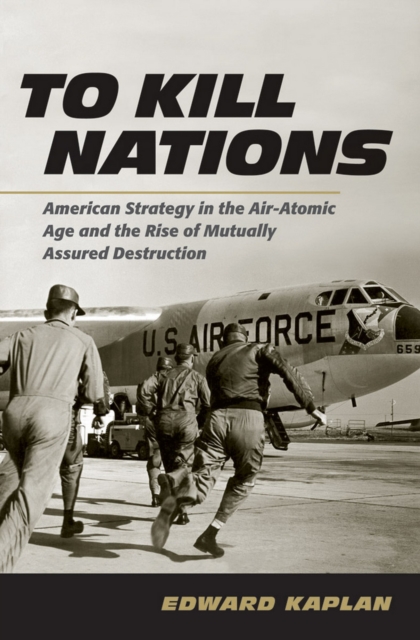To Kill Nations: American Strategy in the Air-Atomic Age and the Rise of Mutually Assured Destruction

To Kill Nations: American Strategy in the Air-Atomic Age and the Rise of Mutually Assured Destruction
Between 1945 and 1950, the United States had a global nuclear monopoly. The A-bomb transformed the nation's strategic airpower and saw the Air Force displace the Navy at the front line of American defense. In To Kill Nations, Edward Kaplan traces the evolution of American strategic airpower and preparation for nuclear war from this early air-atomic era to a later period (1950-1965) in which the Soviet Union's atomic capability, accelerated by thermonuclear weapons and ballistic missiles, made American strategic assets vulnerable and gradually undermined air-atomic strategy. The shift to mutually assured destruction (MAD) via general nuclear exchange steadily took precedence in strategic thinking and budget allocations. Soon American nuclear-armed airborne bomber fleets shaped for conventionally defined--if implausible, then impossible--victory were supplanted by missile-based forces designed to survive and punish. The Air Force receded from the forefront of American security policy.Kaplan throws into question both the inevitability and preferability of the strategic doctrine of MAD. He looks at the process by which cultural, institutional, and strategic ideas about MAD took shape and makes insightful use of the comparison between generals who thought they could win a nuclear war and the cold institutional logic of the suicide pact that was MAD. Kaplan also offers a reappraisal of Eisenhower's nuclear strategy and diplomacy to make a case for the marginal viability of air-atomic military power even in an era of ballistic missiles.
PRP: 272.49 Lei
Acesta este Prețul Recomandat de Producător. Prețul de vânzare al produsului este afișat mai jos.
217.99Lei
217.99Lei
272.49 LeiLivrare in 2-4 saptamani
Descrierea produsului
Between 1945 and 1950, the United States had a global nuclear monopoly. The A-bomb transformed the nation's strategic airpower and saw the Air Force displace the Navy at the front line of American defense. In To Kill Nations, Edward Kaplan traces the evolution of American strategic airpower and preparation for nuclear war from this early air-atomic era to a later period (1950-1965) in which the Soviet Union's atomic capability, accelerated by thermonuclear weapons and ballistic missiles, made American strategic assets vulnerable and gradually undermined air-atomic strategy. The shift to mutually assured destruction (MAD) via general nuclear exchange steadily took precedence in strategic thinking and budget allocations. Soon American nuclear-armed airborne bomber fleets shaped for conventionally defined--if implausible, then impossible--victory were supplanted by missile-based forces designed to survive and punish. The Air Force receded from the forefront of American security policy.Kaplan throws into question both the inevitability and preferability of the strategic doctrine of MAD. He looks at the process by which cultural, institutional, and strategic ideas about MAD took shape and makes insightful use of the comparison between generals who thought they could win a nuclear war and the cold institutional logic of the suicide pact that was MAD. Kaplan also offers a reappraisal of Eisenhower's nuclear strategy and diplomacy to make a case for the marginal viability of air-atomic military power even in an era of ballistic missiles.
Detaliile produsului









